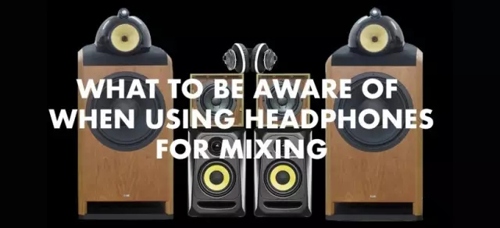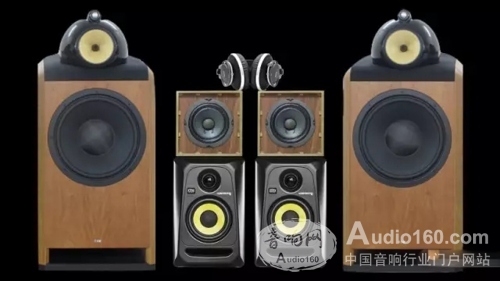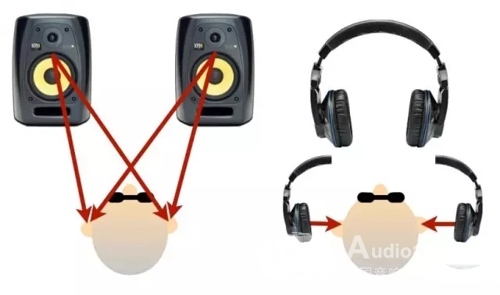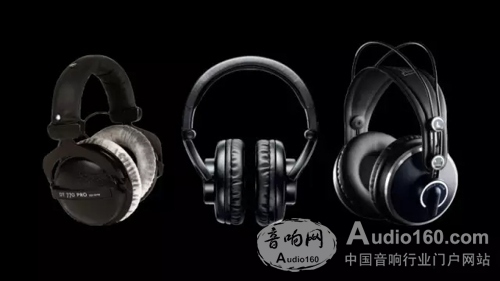
Mixing on headphones sometimes helps, and it's the only way to use it in certain situations. But this method has some special things to consider, and Joe Albano will come together for you in this article...
With the trend of portable music players, more and more people may use headphones to digest the music they play. This is not really a bad thing - the headset can provide a very close listening experience, while also ensuring the privacy of the hearing, whether you are a listener or a neighbor will like this way. But when mixing, using headphones to monitor may have some caveats.
One of the main purposes of mixing monitor mixes is to make all listeners sound good, no matter what kind of playback system the song is playing in - a professional monitor speaker, or a less luxurious family Hi -Fi speakers, live sound systems, car audio systems, etc. - The results of the mix must perform well under these very different conditions. Of course, this also includes headphones, from the highest-end studio-level monitors to the cheap little earbuds that come with a portable music player.

Mixers typically test their mixes on a variety of different playback devices during and after the mix. Of course, it also includes mobile phones. However, in the process of mixing, it is very important to maintain a unified monitoring environment. At the same time, 99% of mixers should recommend professional monitor speakers better than headphones, because the difference between headphones and speaker listening experience. Here are some precautions for using a headset that some mixers need to be aware of.
The most important point of the internal vs external mix is ​​the stereo image - the mix needs to have a nice and wide stereo field, and also has a certain degree of front-to-back depth relationship, which can be reflected in the general stereo speaker settings. Three-dimensional sound image. But when we talk about stereo images, the stereo experience in the headphones is completely different from that on the speakers. Sometimes in the earphones, we will hear some background elements more clearly, and these background elements were originally designed not to make people hear clearly, but to increase the mixing density without being overly noticed.
This subtle sound, such as the background sound, the superimposed track of the instrument, the extra percussion, etc., will sound clearer in the headphones, while some effects, such as reverb and short delay. Some very slight overlay recordings, or short delays that sound less noticeable on the speakers, but add some fullness to the overall mix; but in headphones, this same effect may be easier to be People noticed.
The difference between auditory crosstalk and the listening characteristics of these headphones and speakers can be explained scientifically. In theory, a stereo recording consists of the left channel for the left ear and the right channel for the right ear. But in the room to play stereo recordings with speakers, our two ears can hear all the sounds of the left and right channels - this is inevitable. This mix of sound tracks - the left ear can hear the right channel, the right ear can hear the left channel content - called Inter-Aural Crosstalk. This is also why the sound range of the stereo speakers is limited between the left and right channel speakers, rather than the distance between the speakers, forming a wider angle. At the same time, it also caused some loss of detail (also including the acoustic properties of some rooms, such as reflection and comb filtering effects).
But in headphones, auditory crosstalk does not occur: thanks to the acoustic structure of the headphones, the left channel in the stereo signal can only be heard by the left ear, and the right channel can only be heard by the right ear. That's why headphones always show more subtle elements in the mix (such as background sounds and some tiny effect elements), which are harder to hear on speakers.

Hearing crosstalk may be an advantage for headset users, but as a mixer - if you mix in headphones, balance all the elements, they should sound fine in other headphones, but in the speakers During playback, you may find that there are a lot of details missing. The overall mix may sound too loud and the sound is dim.
That's why we prefer to do the downmixing mainly on the speakers - the result of the mix will sound the same in other speaker systems, while adding extra detail and clarity to the headphones without losing detail. The mixer only needs to check it again in the headphones to ensure that the difference in the sound in the headphones is not decisive. Then make some minor adjustments to the headphones to ensure that the mix sounds good in the speakers and headphones.
The same consideration of width will also occur in the more obvious difference between the speaker and the earphone - stereo width. Of course, the mixer can't control how the speakers put their speakers, but we can refer to the most normal playback configuration - about 60 degrees of placement (of course, the mixer will also check the mono compatibility) .
But in headphones, the stereo field does not have a left-to-right space in the physical space like a speaker. Its actual space is only the distance from the left ear to the right ear of the listener. Stereo placement in the mix is ​​also an important means of balancing and enhancing clarity, which is another important reason why headphones feel different from the speaker's sense of hearing - at least on the average earphones (some headphones have special Features, such as sound field simulation, and special arrangement of headphone units, or external sound field projection, etc., but this is only a very small number of headphones.
Low Frequency In any listening environment, it is a challenge to pair the bass. Even if the speakers are a good mix, all experienced mixers will know that the bass playback conditions in the room are usually confusing because of the standing wave problem. However, there are some bass problems with the headphones. There are some small differences in the position of the earphones on different people's ears, and the performance of the bass will be different because of the difference between the sponge and the leather cover, even on the same pair of headphones, different people (even the same person, wearing The difference in position) the sound that sounds may sound different. Earplugs also have such problems, although most earplugs do not have excellent low frequency response.

Of course, the listening sound of the bass is different in every room, and the sense of hearing in the headphones and in the speakers will also be different. In the case of using the earphone monitor, the body does not feel the vibration of the bass to the body. Even if the bass dive of the earphone is excellent, it will cause the mixer to subconsciously raise the amount of low frequency, causing the entire mix to sound too dim. Or bloated.
Sound pressure level!

Finally, we mentioned the problem of monitoring the volume. Experienced sound engineers will avoid working too long in a loud environment (eg > 90 dBspl). Many sound engineers will follow the recommended monitor sound pressure of 83 dBspl and occasionally check the mix at higher or lower monitor levels. But for headphone monitoring, monitoring the monitor sound pressure is a very difficult thing, and the lack of the volume of the bass part makes the sound of the headphone sound like no sound. Hearing impairment is the first to affect the mid-high frequency area. If the headset user over-raises the volume of his or her headphones (to fill the missing bass vibration), it may be easier for them to cause hearing damage and tinnitus.
The summary mentions so many points to note, headphone monitoring is actually a very important part of the mixing process. Although most of the headphones sound quality is not satisfactory, but the best headphones (also very expensive) can provide us with excellent details and full-band response, and will not be affected by the acoustics in the room. Staining - As long as you are familiar enough with the characteristics of the headphones, you can respond to the reactions in the mix.
Aluminum Alloy LED lamps,Low Power LED lamps,LED wall washer
Kindwin Technology (H.K.) Limited , https://www.ktlleds.com